North Carolina’s gem-rich mountains have produced some of the largest beryl crystals ever found in North America. Back in 1999, a massive aquamarine beryl weighing 1,649 carats was discovered here – that’s larger than your fist!
Looking for Beryl isn’t easy though. You need to know exactly where to look, or you’ll waste hours searching in the wrong spots. After all, this beautiful crystal only forms in specific geological conditions.
We’ve done the hard work for you. After talking to local miners and geology experts, we’ve put together a list of proven spots where you’re most likely to find beryl in North Carolina. These locations have consistently produced good finds over the years.
How Beryl Forms Here
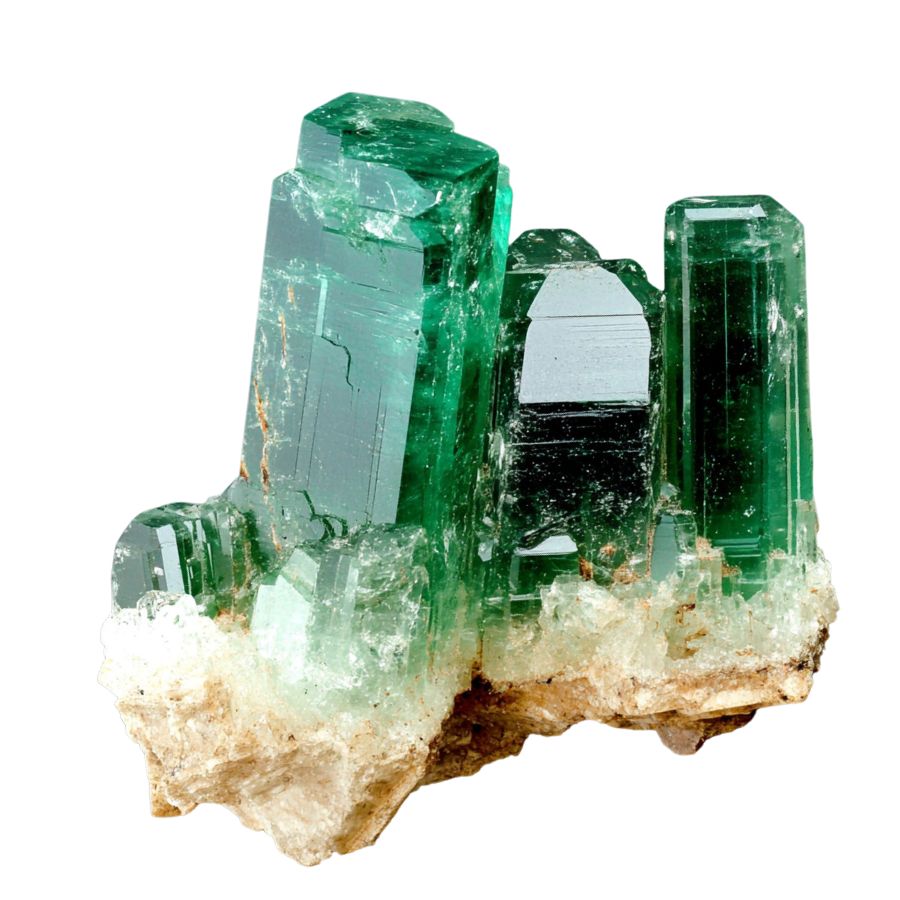
Beryl forms in specific geological environments, primarily in pegmatites and hydrothermal veins. These locations provide the right conditions for crystallization.
The process begins deep within the Earth, where hot, mineral-rich fluids carry essential elements like beryllium, aluminum, and silicon. As these fluids move through cracks in the rocks, they cool down, allowing beryl to crystallize slowly over time.
The unique hexagonal crystal structure of beryl arises from chains of silicate tetrahedra that link together. This structure not only gives beryl its strength but also its beautiful colors, which can vary based on impurities present during formation.
Thus, the intricate dance of temperature, pressure, and mineral content creates this stunning gemstone.
Types of Beryl
Beryl comes in a stunning variety of colors and formations, each with its own unique characteristics and value in the gemstone market.
Aquamarine
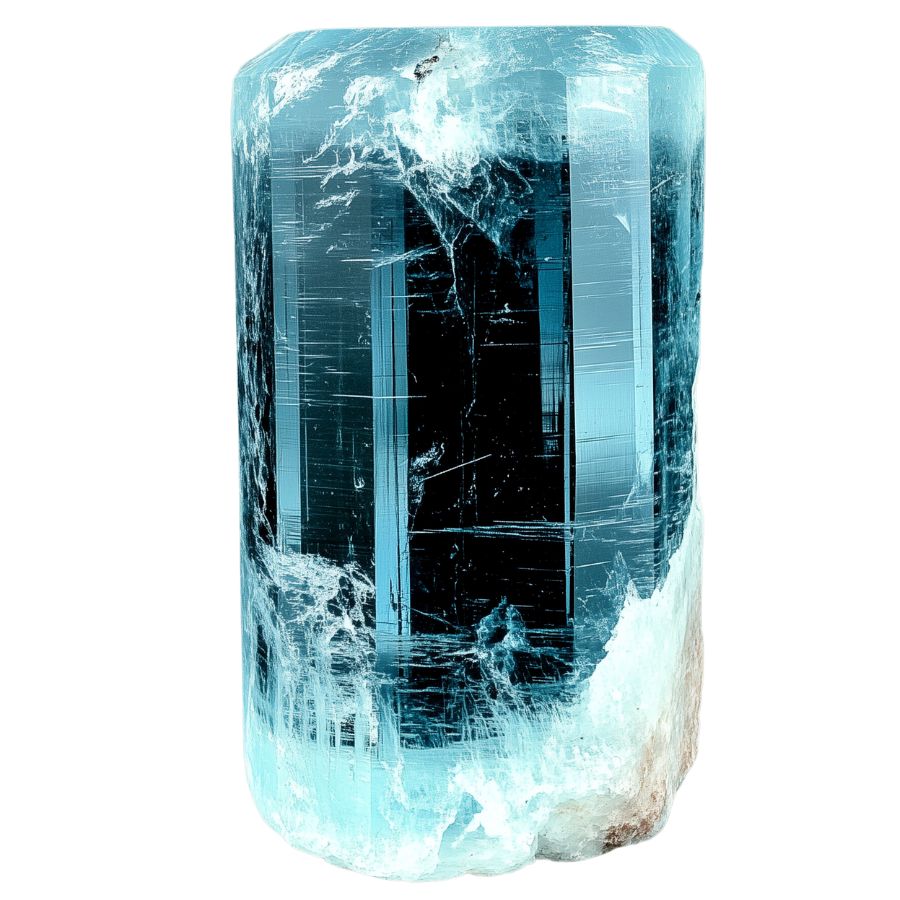
Aquamarine’s sea-blue to blue-green colors instantly remind people of ocean waters. The stone ranges from pale, almost colorless shades to deep teal hues, with the most valued pieces showing a bright sky-blue color. Iron gives aquamarine its signature color, and most pieces are remarkably clear.
The stone’s exceptional clarity makes it stand out. While other similar stones often have visible flaws inside, aquamarine typically appears clean and transparent. This clarity allows light to pass through beautifully, creating bright sparkles and flashes.
Ancient civilizations treasured aquamarine, using it in decorative pieces and protective items as far back as 500 B.C. The stone’s enduring popularity speaks to its timeless appeal.
The largest cut aquamarine, the Don Pedro, weighs an impressive 10,363 carats and sits in the Smithsonian Institution.
Maxixe
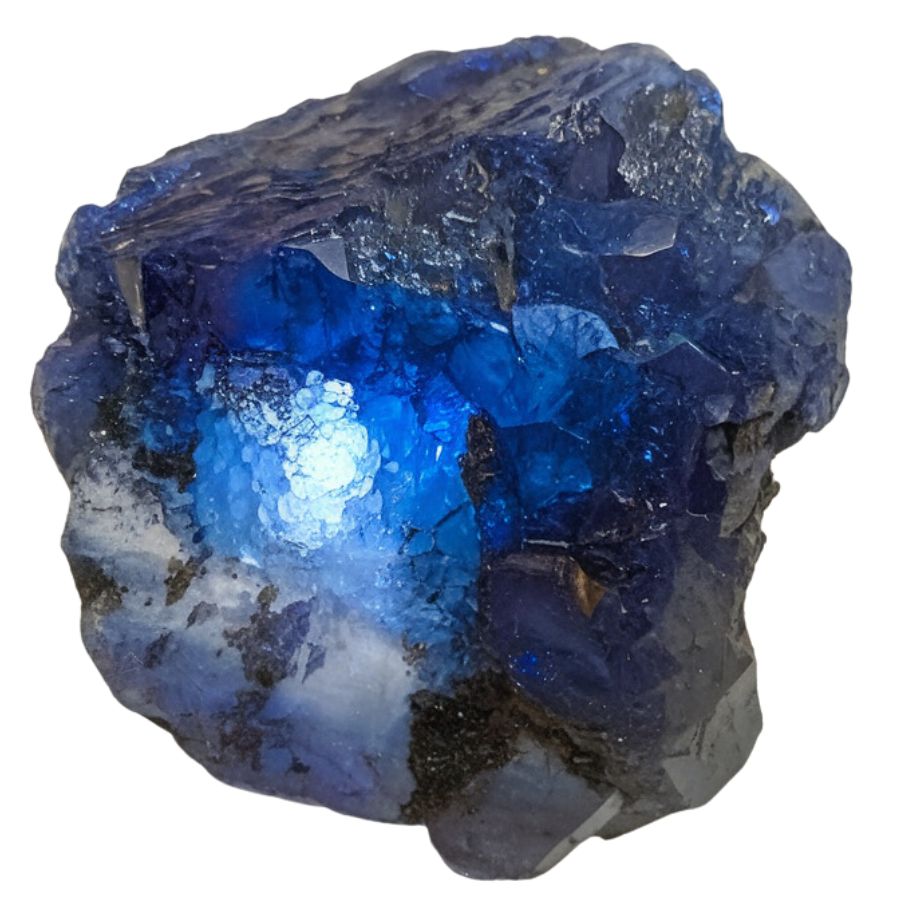
Maxixe showcases an intense blue to violet-blue color that makes it truly distinctive. However, its most fascinating feature is how its color changes when exposed to light or heat, sometimes shifting to a brown-yellow shade.
The stone’s color comes from natural radiation effects, creating a unique appearance that sets it apart. When viewed from different angles, Maxixe shows varying shades of blue, an optical effect that makes each piece special.
One of Maxixe’s most intriguing aspects is its color stability. The vibrant blue can fade with exposure to sunlight, but interestingly, artificial radiation can restore its original color. This unique characteristic has made it a subject of scientific study.
Bixbite
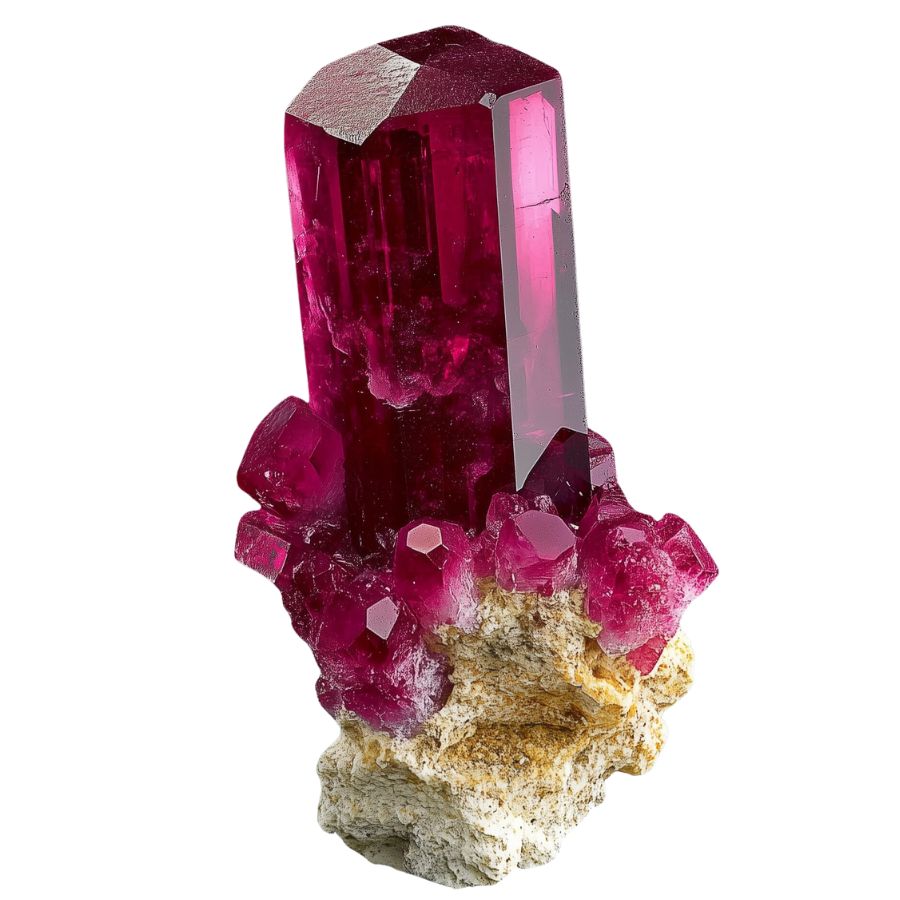
Bixbite displays a striking red color that ranges from soft pink-red to deep, rich red tones. The vibrant color comes from manganese in its structure, creating a remarkable appearance that catches the eye immediately.
Its formation process makes it extraordinarily special. The specific conditions needed for Bixbite to form rarely occur in nature, contributing to its exceptional rarity. For perspective, one Bixbite crystal is found for every 150,000 gem-quality diamonds.
Most Bixbite pieces are small, usually under one carat, making larger specimens particularly remarkable. The stone’s intense color combined with its small size creates concentrated beauty that collectors particularly appreciate.
Originally discovered in 1904 by Maynard Bixby, this stone was first mistaken for red emerald. Its discovery sparked significant interest in the geological community, and it continues to captivate collectors and enthusiasts with its remarkable combination of color and rarity.
Emerald
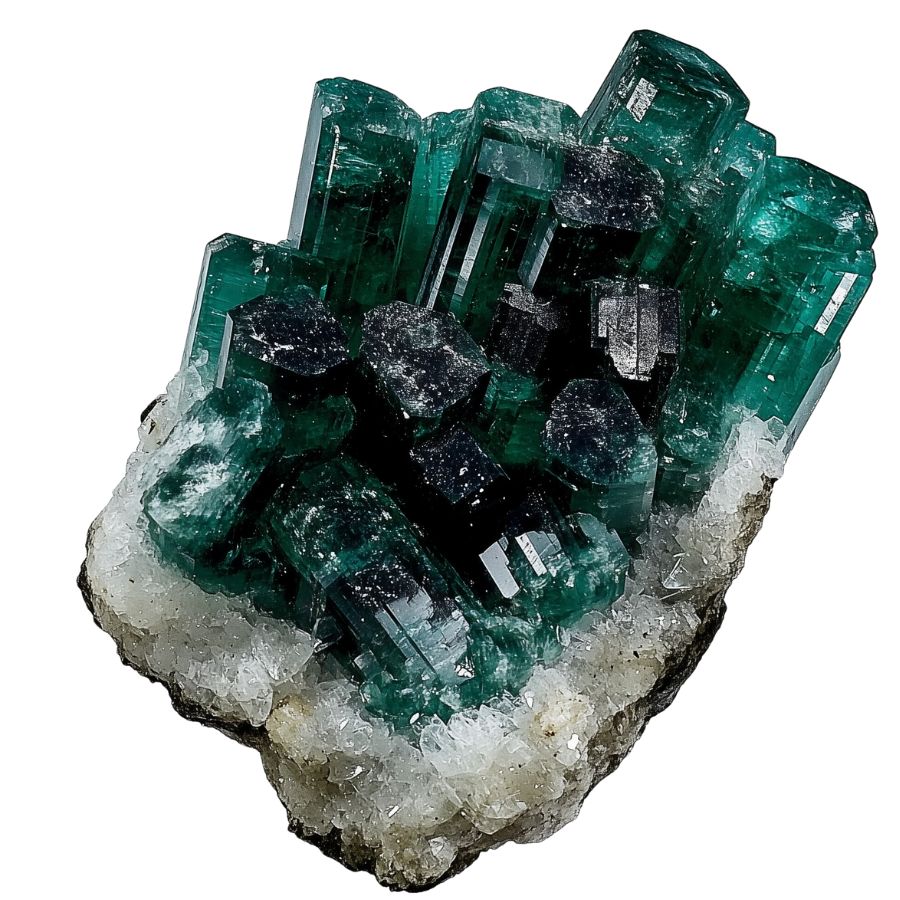
Emeralds are recognized for their vivid green color, which can range from yellow-green to deep jade. The most desirable shades are bluish-green with even saturation and medium to medium-dark tones. This distinctive green comes from traces of chromium and vanadium in the stone.
Almost every natural emerald contains internal marks called “jardin” (meaning garden in French). These natural patterns make each stone unique. While other gems are valued for being completely clear, these garden-like patterns are actually appreciated in emeralds.
Ancient Egyptians prized emeralds above all other gems. The Duke of Devonshire Emerald, weighing 1,383.93 carats, remains one of the largest uncut emeralds ever found. The stone’s rarity also adds to its appeal – emeralds are actually rarer than diamonds.
Golden Beryl
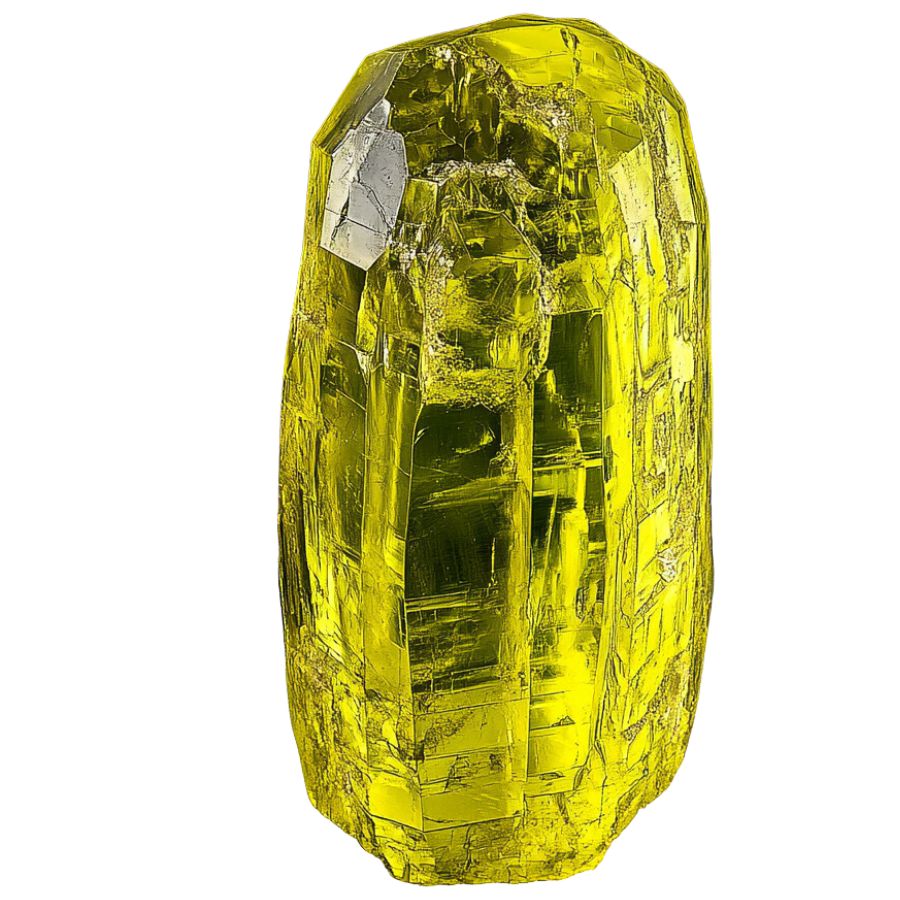
Golden Beryl shines with bright yellow to rich golden colors that seem to glow from within. The color comes from tiny amounts of iron in the stone. Most pieces are beautifully clear, without the internal marks often seen in other similar stones.
The stone’s exceptional clarity makes it special. Light passes through easily, creating bright sparkles that enhance its natural golden glow. This clarity, combined with its color, creates an impressive display of brilliance.
Large crystals of Golden Beryl are particularly impressive. They form in six-sided shapes and can grow to remarkable sizes while maintaining their beautiful transparency. This makes each piece uniquely striking.
Heliodor usually presents a yellow-green or greenish-yellow hue. In contrast, Golden Beryl is characterized by its pure golden yellow or bright yellow appearance.
Heliodor
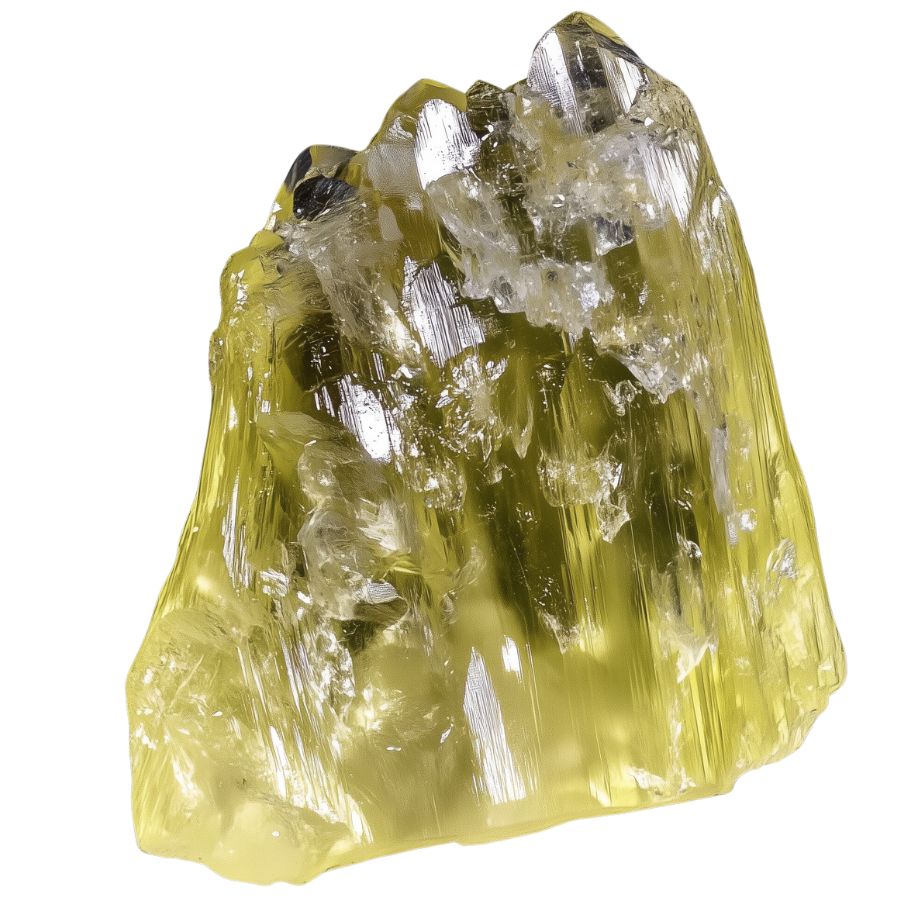
Heliodor captures the essence of sunlight with its yellow to golden-yellow colors. Some stones show hints of green, creating unique color combinations that set them apart from other yellow gems. The name itself means “gift of the sun” in Greek.
These stones typically form as clear, transparent crystals. They often show interesting natural etchings on their surface, adding character to each piece. The clarity of Heliodor allows light to pass through beautifully, creating bright flashes of color.
The stone’s surface patterns make each piece distinct. Natural markings and crystal shapes create interesting features that collectors appreciate. These characteristics tell the story of how the stone formed.
High-quality Heliodor pieces are quite rare. When found, they often show remarkable size and clarity together. This combination of qualities makes each good specimen special and worthy of any rock collection.
Goshenite
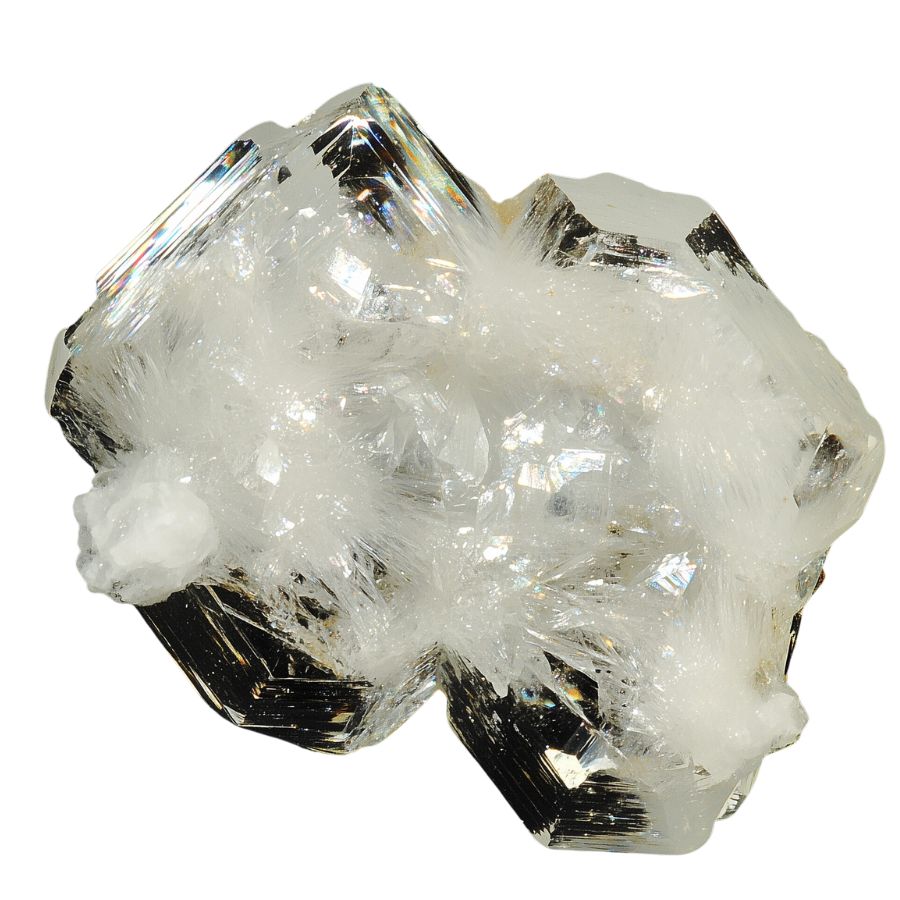
Goshenite stands out with its pure, colorless appearance. The stone is remarkably clear and transparent, often resembling a drop of pure water. This clarity comes from its formation in environments free from color-causing elements.
Many people appreciate Goshenite for its excellent transparency. The stone rarely contains internal marks or cloudiness. This makes it particularly brilliant when cut, allowing light to pass through cleanly and create bright sparkles.
One fascinating aspect of Goshenite’s history is its use in early optical instruments. During medieval times, people crafted these clear crystals into lenses for spectacles and magnifying glasses. This happened before modern glass-making techniques existed.
The stone’s purity makes it special in collections. While other similar stones show various colors, Goshenite maintains its water-clear appearance. Large, clear crystals are particularly prized among collectors who appreciate their pristine beauty.
Green Beryl
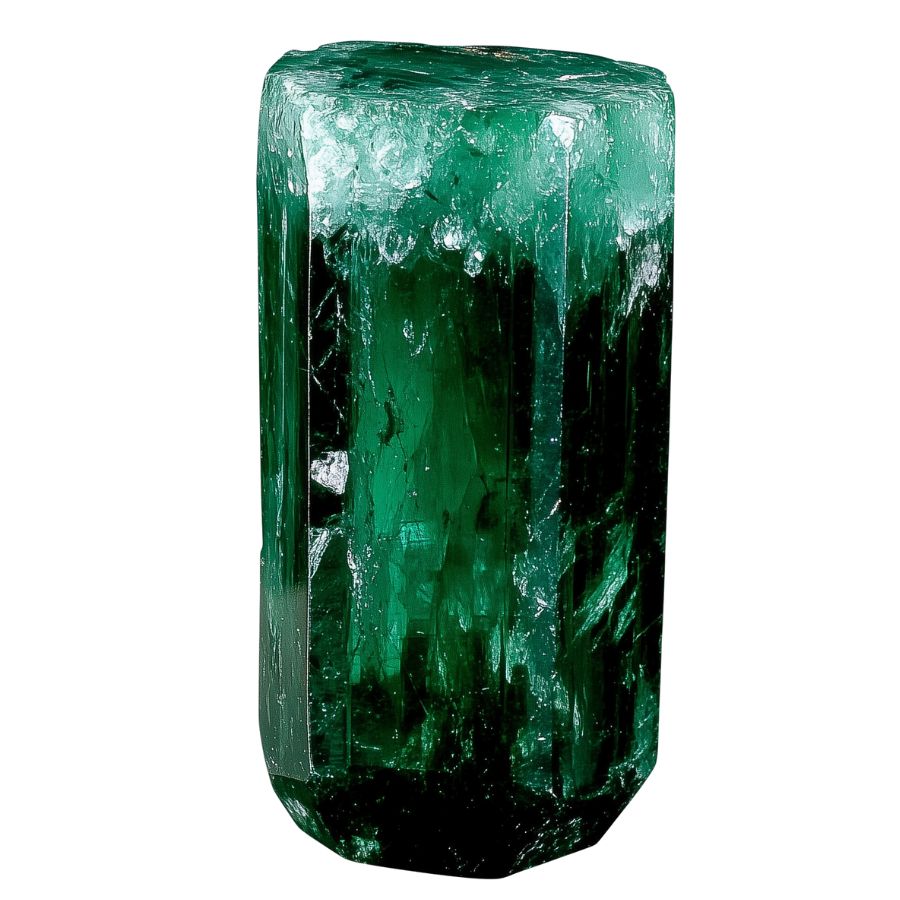
Green Beryl shows soft to vibrant green shades, from pale mint to deeper forest tones. The color comes from tiny amounts of iron in the crystal. These stones typically have excellent clarity with few internal marks.
The stone’s color can change slightly under different lights. Some pieces show a hint of yellow when viewed from certain angles. This subtle color play adds to their appeal and makes each stone unique.
Most Green Beryl crystals form with remarkable clarity. They often grow into large, clear pieces that maintain their beautiful transparency. This makes them particularly impressive in collections.
These stones often develop in larger sizes than similar green gems. Their natural crystal shape is six-sided, and they can grow quite large while staying clear and bright. This combination of size and clarity makes them special.
Morganite
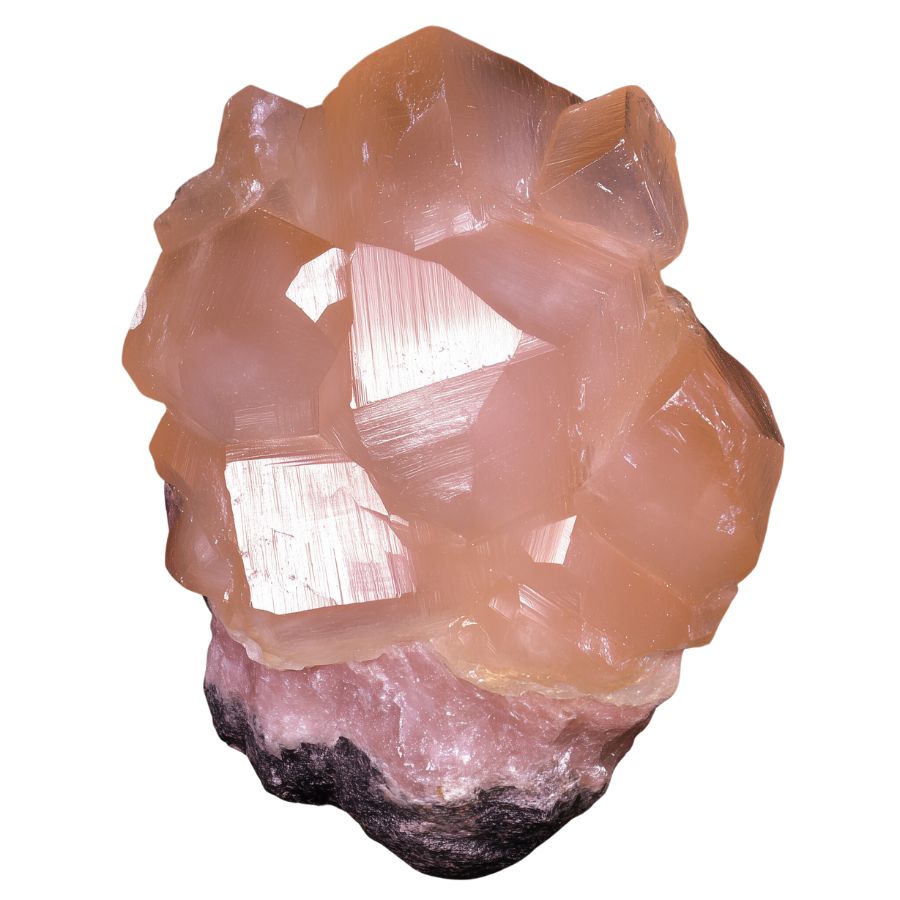
Morganite displays delicate pink to peach colors that range from soft pastels to deeper salmon tones. The beautiful color comes from manganese in the crystal structure. Some stones show different shades of pink when viewed from different angles.
These crystals can grow to impressive sizes. Some of the largest pieces have weighed over 20 pounds. The size potential makes Morganite particularly interesting for collectors and specimen hunters.
The stone often forms with remarkable clarity. Most pieces are free from internal marks, allowing light to pass through beautifully. This clarity enhances their soft, romantic colors.
Morganite’s colors tend to be subtle and sophisticated. The gentle pink and peach tones set it apart from more intensely colored stones. Large, clear pieces with good color are especially valued in collections.
What Rough Beryl Looks Like
Identifying a rough beryl might seem tricky, but with a few tips, you can spot one even if you’re not a rock expert. Here’s how you can do it.
Look for the Hexagonal Crystal Structure
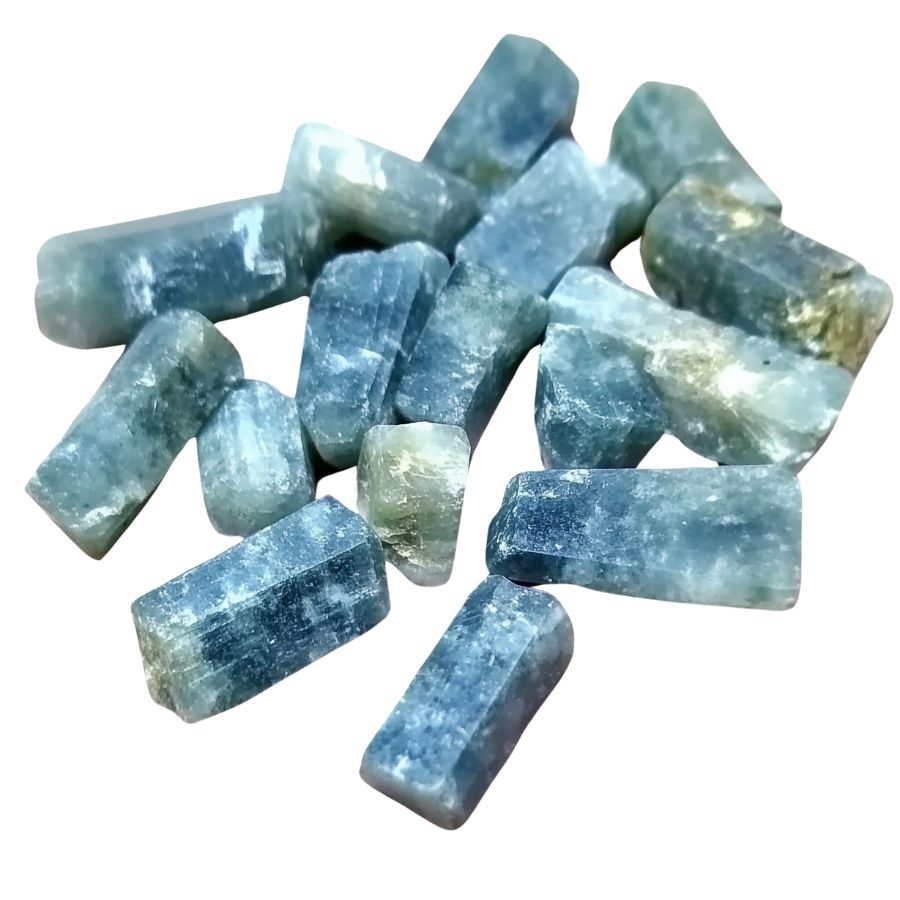
Raw beryl typically forms in six-sided (hexagonal) crystals, sometimes as long columns. You’ll often spot these distinct shapes even in rough specimens.
They’re not always perfect – sometimes they’re broken or embedded in other rocks. But if you see a hexagonal pattern, especially in a greenish or bluish stone, you might have beryl on your hands.
It’s incredibly important to know what you’re looking at and to have a good reference guide. So many rockhounds are throwing away pieces of beryl and other incredible finds without realizing it!
If you want REAL results finding incredible rocks and minerals you need one of these 👇👇👇
Finding the coolest rocks in isn’t luck, it's knowing what to look for. Thousands of your fellow rock hunters are already carrying Rock Chasing field guides. Maybe it's time you joined the community.
Lightweight, mud-proof, and packed with clear photos, it’s become the go-to tool for anyone interested discovering what’s hidden under our red dirt and what they've already found.
Join them, and make your next rockhounding trip actually pay off.
What makes it different:
- 📍 Find and identify 140 incredible crystals, rocks, gemstones, minerals, and geodes across the USA
- 🚙 Field-tested across America's rivers, ranchlands, mountains, and roadcuts
- 📘 Heavy duty laminated pages resist dust, sweat, and water
- 🧠 Zero fluff — just clear visuals and straight-to-the-point info
- ⭐ Rated 4.8★ by real collectors who actually use it in the field
Check for a Glassy or Waxy Luster
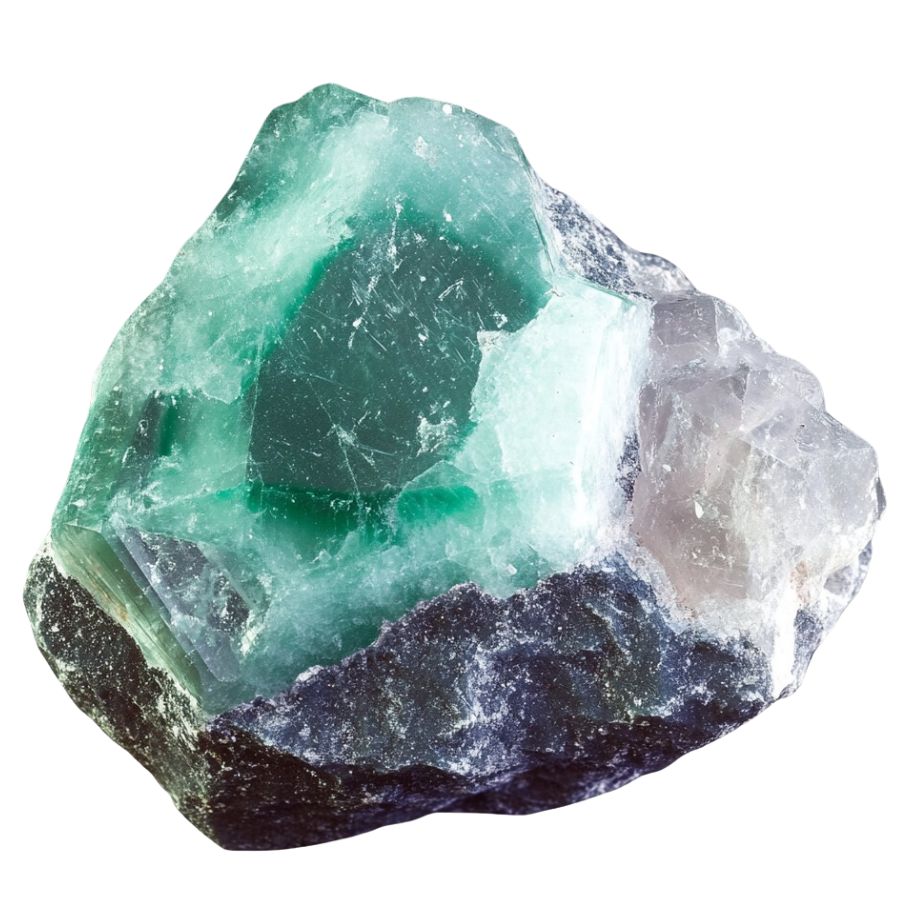
Unlike quartz’s brilliant shine, beryl has a more subdued glassy look. Run your finger across it – it should feel smooth but not super shiny.
Sometimes it’s even a bit waxy, like a candle that’s cooled down. If it’s too sparkly or looks metallic, probably not beryl.
Assess the Color Range
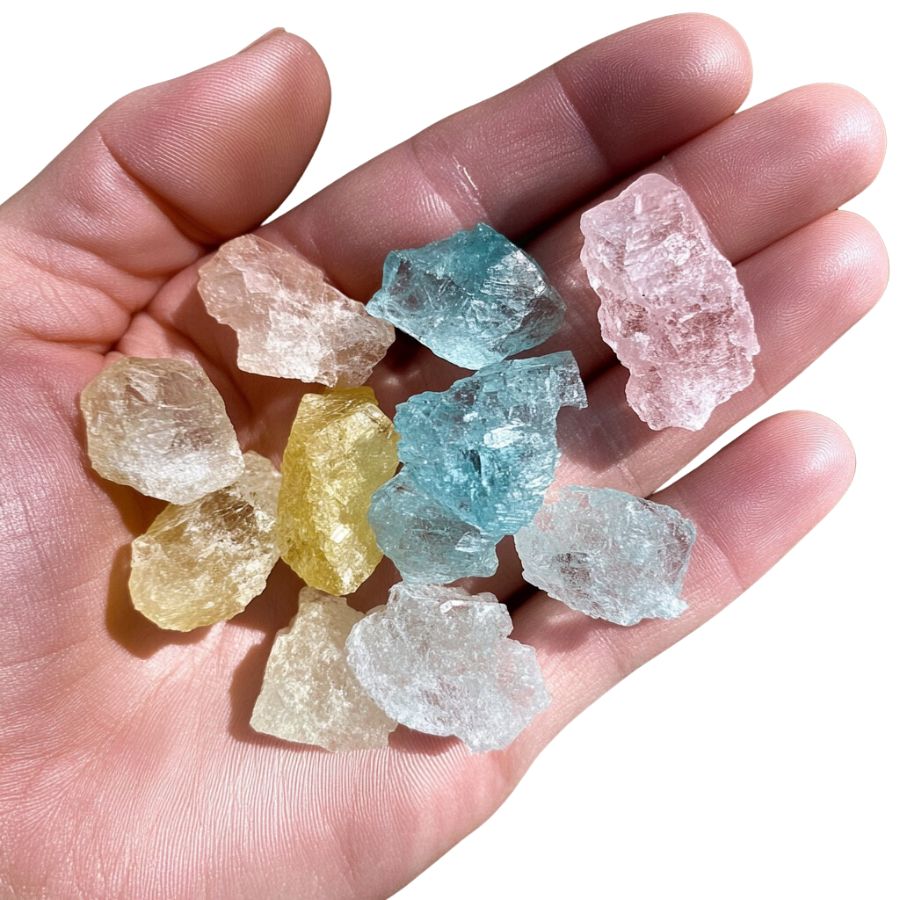
Beryl’s pretty sneaky with its colors. Most rough pieces come in pale green but don’t just stop there. Look for subtle blue tints, yellowish hues, or even colorless specimens.
The color’s usually uneven – you might see darker and lighter patches in the same piece. Grab a flashlight and shine it through thinner edges – beryl often shows some transparency.
Test the Hardness
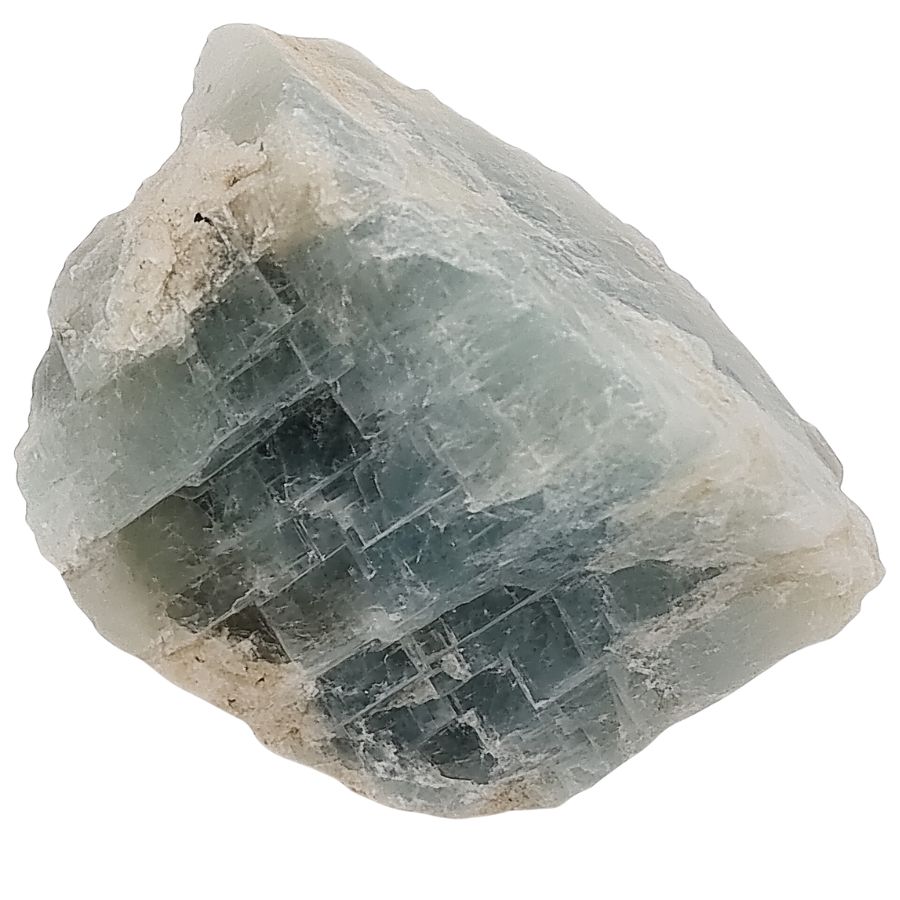
Here’s a neat trick: try scratching the surface with a steel nail. Beryl’s pretty tough (7.5-8 on the Mohs scale) and won’t scratch easily.
Got a piece of quartz handy? Beryl should be able to scratch it. But be gentle – you’re not trying to destroy the specimen!
A Quick Request About Collecting
Always Confirm Access and Collection Rules!
Before heading out to any of the locations on our list you need to confirm access requirements and collection rules for both public and private locations directly with the location. We haven’t personally verified every location and the access requirements and collection rules often change without notice.
Many of the locations we mention will not allow collecting but are still great places for those who love to find beautiful rocks and minerals in the wild without keeping them. We also can’t guarantee you will find anything in these locations since they are constantly changing.
Always get updated information directly from the source ahead of time to ensure responsible rockhounding. If you want even more current options it’s always a good idea to contact local rock and mineral clubs and groups
Tips on Where to Look
Once you get to the places we have listed below there are some things you should keep in mind when you’re searching:
Pegmatite Formations
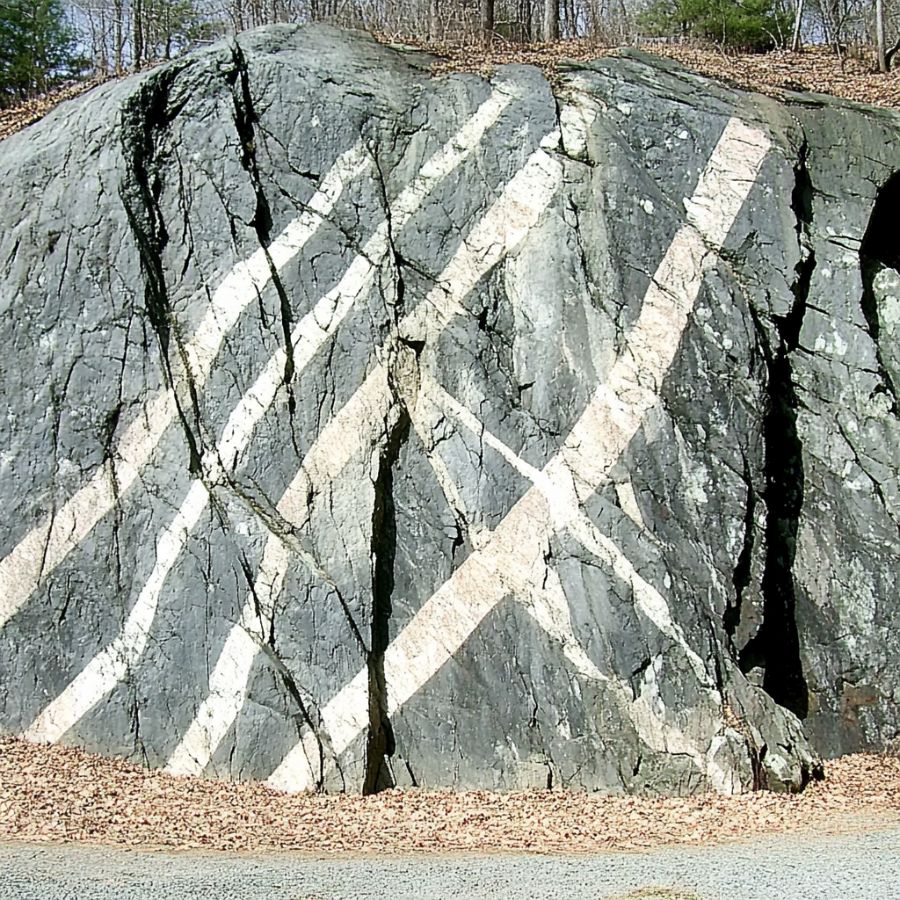
Look in coarse-grained igneous rocks called pegmatites. These form as magma cools slowly underground. Beryl crystals here are often large and well-formed.
Check exposed pegmatite veins on hillsides or road cuts where erosion has revealed the rock layers.
Old Mining Areas
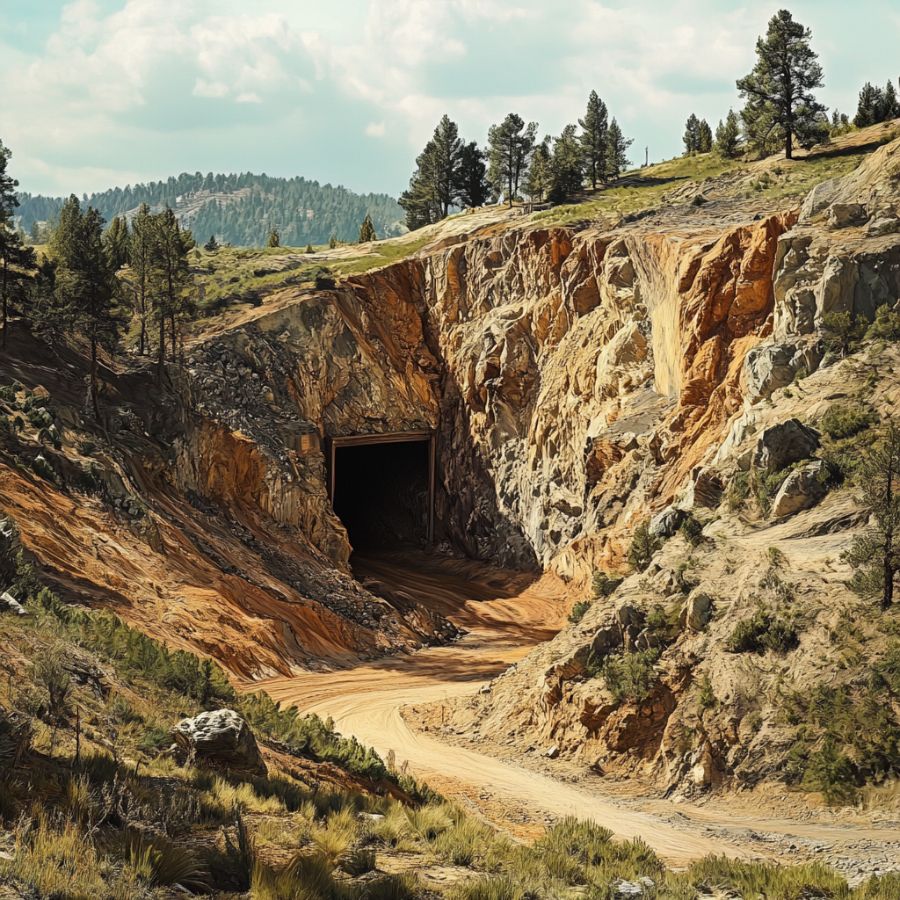
Explore abandoned mica and feldspar quarries. Beryl often occurs alongside these minerals. Scout the dump piles and tailings, where miners discarded “worthless” rocks.
These areas frequently contain overlooked beryl specimens that weren’t considered commercially viable during active mining periods but are perfect for collectors.
Stream Beds
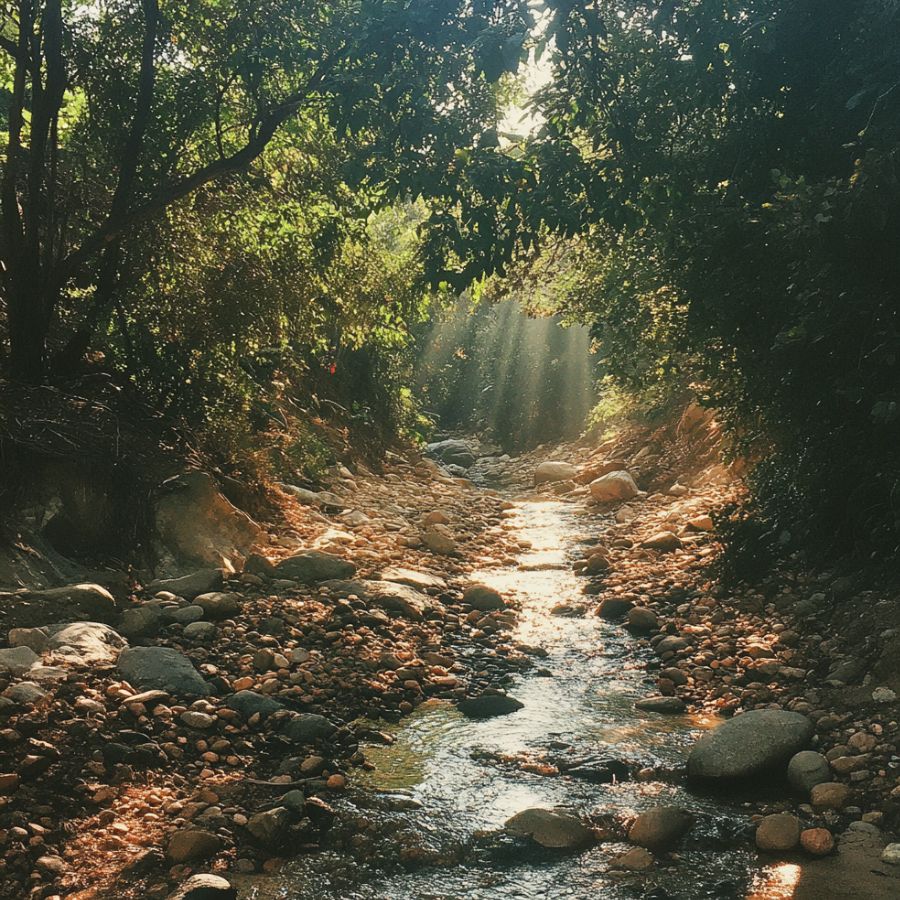
Search gravel beds in streams that cut through metamorphic rock areas. While most people focus on looking directly in the water, the real treasures often hide in the gravel deposits along the banks where heavier minerals, including beryl fragments, tend to accumulate during seasonal flooding and natural sorting processes.
Granite Outcrops
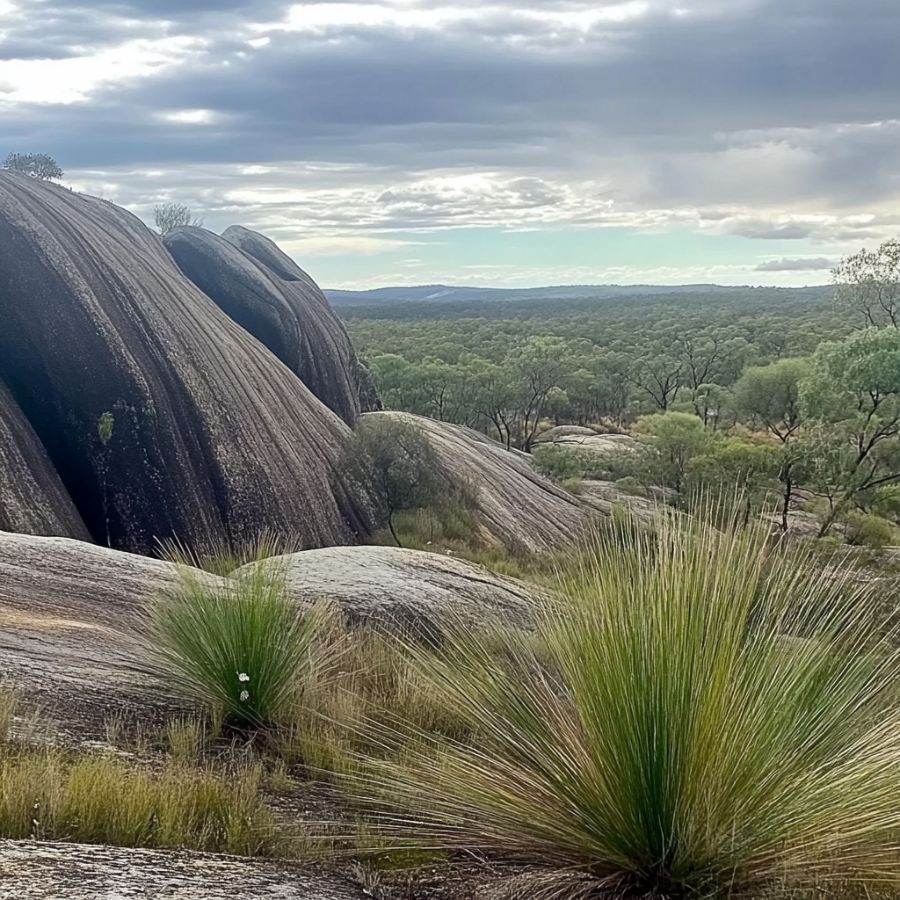
Check weathered granite outcrops, especially where the rock shows signs of mineralization. Look for zones with white quartz and mica, as beryl commonly associates with these minerals. Focus on areas where the granite appears altered or shows color variations.
The types of Beryl you can find around the state
The types of beryl mostly found are Emerald, Aquamarine, Goshenite, Heliodor, Morganite, Golden, and Green Beryl.
Emerald, known for its rich green color, is one of the most prized varieties and is found in several locations within California. Aquamarine, characterized by its blue to blue-green hues, is also prevalent, often discovered in the Sierra Nevada region.
Goshenite, the colorless variety of beryl, can be found alongside other beryls in various deposits. Heliodor, with its yellow to golden shades, and Morganite, which ranges from pink to peach, are both sought after for their unique colors and are less common but still present.
Golden Beryl and Green Beryl are also notable finds in California, adding to the state’s diverse mineralogical landscape.
Some Great Places To Start
Here are some of the better places to start looking for beryl in North Carolina:
Always Confirm Access and Collection Rules!
Before heading out to any of the locations on our list you need to confirm access requirements and collection rules for both public and private locations directly with the location. We haven’t personally verified every location and the access requirements and collection rules often change without notice.
Many of the locations we mention will not allow collecting but are still great places for those who love to find beautiful rocks and minerals in the wild without keeping them. We also can’t guarantee you will find anything in these locations since they are constantly changing.
Always get updated information directly from the source ahead of time to ensure responsible rockhounding. If you want even more current options it’s always a good idea to contact local rock and mineral clubs and groups
Brush Creek Mountain

Brush Creek Mountain stands in Mitchell County, part of North Carolina’s famous Spruce Pine Mining District. This area has a rich history of producing high-quality beryl specimens, particularly aquamarine varieties.
The mountain’s geology features remarkable pegmatite formations, created millions of years ago during the final stages of magma crystallization. These pegmatites contain large mineral-rich pockets where beryl crystals form alongside other precious minerals.
The best spots to search for beryl are along the exposed pegmatite outcrops and in the mountain’s stream beds. These water-worn areas often reveal fresh material after heavy rains.
The mountain’s unique mineral composition also produces exceptional specimens of garnet, mica, and staurolite.
Burnsville area

The Burnsville is located in Yancey County, North Carolina, amid the majestic Blue Ridge Mountains. This historic mining region, about 35 miles northeast of Asheville, centers around Hurricane Mountain and its famous Ray Mica Mine.
The Ray Mica Mine, located 2.5 miles southeast of Burnsville, has produced impressive beryl specimens, including aquamarine, morganite, and golden heliodor varieties.
Collectors often find success searching through the mine’s old dumps and exposed pegmatite outcrops. The site features several open cuts and vertical shafts where beryl crystals have been discovered alongside other minerals like mica and feldspar.
The surrounding Bolen’s Creek area on National Forest land also offers potential spots for finding beryl specimens, particularly where pegmatite veins are exposed on the surface.
Beaverdam Creek

Beaverdam Creek flows through northwestern Raleigh in Wake County, North Carolina, cutting through the historic Carolina Country Club grounds. This creek system is part of North Carolina’s famous tin-spodumene belt, making it a significant location for mineral enthusiasts.
The creek’s geological setting features impressive Falls Leucogneiss formations and felsic gneiss borders, creating ideal conditions for beryl formation.
The most productive spots for finding beryl are along the creek’s exposed outcrops, especially where pegmatite veins intersect with the water flow. These crystalline formations often appear as hexagonal prisms in various shades of green and blue.
The best hunting spots are typically downstream from the major pegmatite outcrops, where natural erosion has freed smaller specimens.
Morganton Quarry

Morganton Quarry is located in the central part of Burke County, North Carolina. It’s situated in the town of Morganton, which is approximately 75 miles northwest of Charlotte and 57 miles east of Asheville.
Beryl crystals here often appear in the quarry’s pegmatite veins alongside other minerals like feldspar, muscovite, and quartz.
The best specimens are typically found in the quarry’s older sections, particularly where weathered pegmatite outcrops are exposed. Look for pale green to blue-green hexagonal crystals in the coarse-grained granite and pegmatite formations.
The quarry also holds historical significance as a former industrial mining site, where various industrial minerals were extracted during the early 20th century. This mining activity exposed many of the mineral-rich zones that collectors explore today.
Stony Point

Stony Point is located in Alexander County, North Carolina, about 35 miles southeast of the Blue Ridge Mountains. This historic mining area, with its 1,000-foot elevation, has produced some of North America’s finest emerald specimens.
The Hiddenite and Emerald Mine near Stony Point is particularly notable for its high-quality emerald crystals. The mine’s hard rock walls create ideal conditions for beryl formation, especially its emerald variety.
The location has yielded several significant finds, including exceptional emerald specimens that have made their way into major mineral collections.
The area’s unique combination of geological features and mineral-rich veins makes it a significant site for beryl hunting in North America.
Places Beryl has been found by County
After discussing our top picks, we wanted to discuss the other places on our list. Below is a list of the additional locations where we have succeeded, along with a breakdown of each place by county.
| County | Location |
| Alexander | Lambert Creek |
| Alexander | Sharpes Emerald Prospect |
| Alexander | O. F. Patterson Mine |
| Ashe | Hamilton Mine |
| Ashe | Hardin Mine |
| Ashe | Laws Prospect |
| Ashe | Little Phoenix Mine |
| Ashe | Speers Mine |
| Ashe | Tarkington Mine |
| Avery | Elbert’s Aquamarine Mine |
| Buncombe | Balsam Gap Mine |
| Buncombe | Swannanoa Mica Mine |
| Burke | J.C. Mills Mine |
| Burke | Brittain Prospect |
| Burke | Burkmont Mountain |
| Burke | Joel Walker Beryl Prospect |
| Caldwell | Broyhill Mica deposit |
| Catawba | Bessie Hudson Mine |
| Catawba | Wike Prospect |
| Clay | Buck Creek Mine |
| Cleveland | Lattimore Mine |
| Cleveland | Turner Mine |
| Cleveland | W. H. Fortenberry Prospect |
| Franklin | Alston Mine |
| Gaston | Bessemer City Quarry |
| Gaston | Big Bess Mine |
| Gaston | Bridges Arnold Beryl prospect |
| Gaston | Huskins Mine |
| Gaston | LCA Mine |
| Iredell | W. A. Campbell Prospect |
| Jackson | Rice Mine |
| Jackson | Sheepcliff Mine |
| Lincoln | Shull Mine |
| Macon | Tessentee Creek |
| Macon | Littlefield Mine |
| Macon | McGee Mine |
| Macon | Thorn Mountain Mine |
| McDowell | Mills Creek |
| Madison | Ball Feldspar Mine |
| Madison | Holcombe Branch Olivine Deposit |
| Madison | Carter Mine |
| Mitchell | Buchanan Mine |
| Mitchell | Bushy Creek Mine |
| Mitchell | Little Switzerland |
| Rutherford | P. G. McKinney Deposit |
| Swain | Brooks Feldspar Beryl Deposit |
| Swain | Branton Feldspar Mine |
| Watauga | Arney Foster Mine |
| Watauga | Buckeye Creek Prospect |
| Watauga | Mica Springs Prospect |
| Watauga | Woodring Prospect |
| Wilkes | Champion area old Mica mines |
| Yancey | S. W. Presley Mine |


